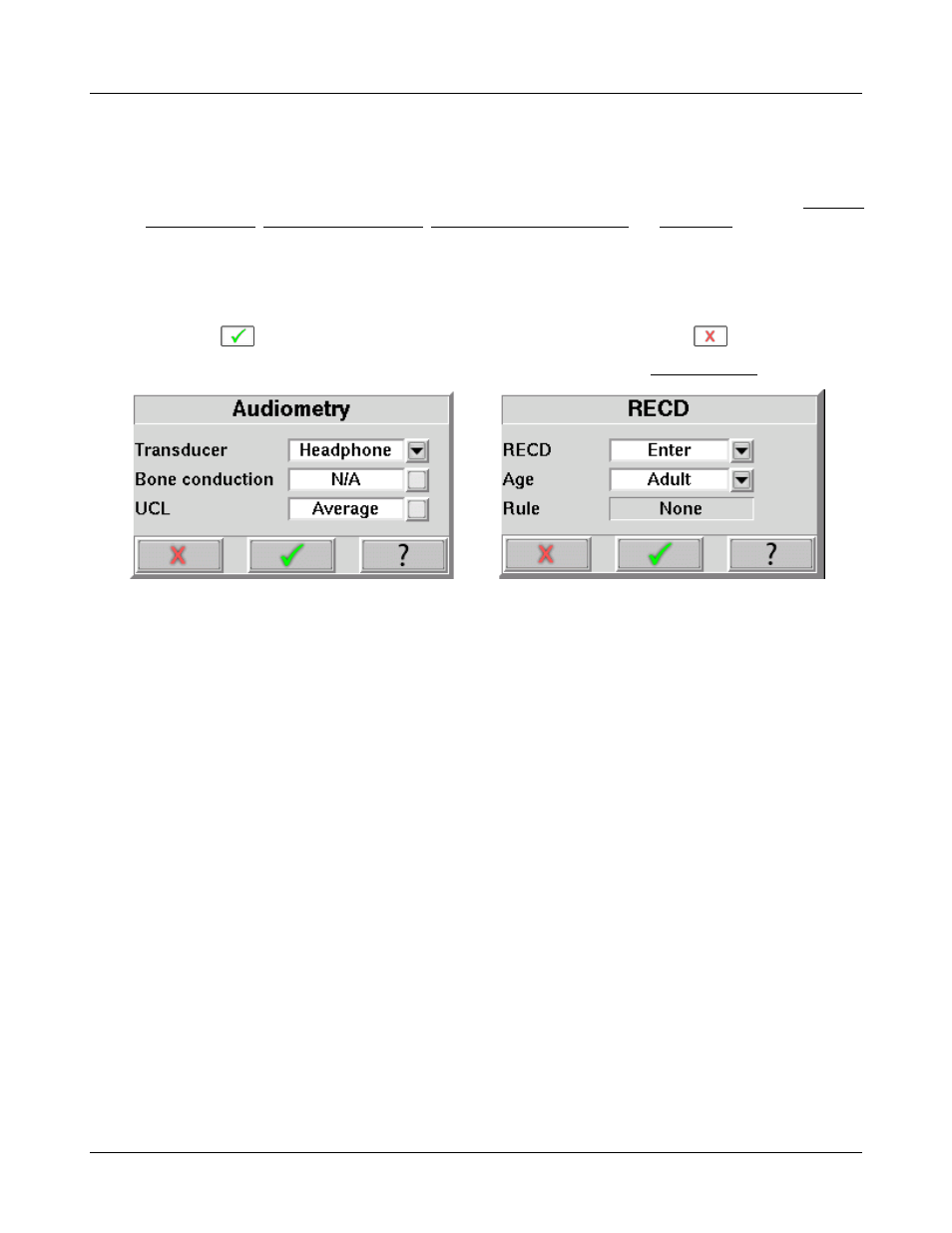Data entry, Fitting to targets for soft speech, 18 speechmap fitting procedures – Audioscan Axiom User Manual
Page 88: Speechmap screen choices

Axiom
®
User's Guide Version 1.8
May 2015
18 Speechmap Fitting Procedures
The Speechmap fitting screen provides a number of choices for inputing and applying audiometric data for the
verification of hearing instrument fittings. The procedures in this section assume a familiarity with Test Box
Measures - Setup, On-Ear Measures - Setup, On-Ear Measures Screen Setup and Speechmap.
Speechmap screen choices
Speechmap choices are accessed by clicking on [Audiometry], [RECD], [Verification] or [Targets], which will
cause a related selection poster to be presented. Changes made on the poster are applied and the poster closed by
clicking on
. The poster may be closed without applying the changes by clicking
.
Defaults are the last-used choices if test setup memory has been turned on. See Saving test setup.
1. Transducer: Sound source used to obtain the audiogram. Select from [Headphone, Insert + Foam, or
Soundfield. If Headphone is selected, average adult real-ear to dial difference (REDD) is used to convert
entered HL values to ear canal SPL. If Insert + Foam is selected, the appropriate real-ear to coupler
difference (RECD) is used to convert entered HL values to ear canal SPL values. If Soundfield is selected
appropriate real-ear unaided gain (REUG) values @ 45 degrees azimuth, will be used to convert HL values
to ear canal SPL values.
2. Bone conduction: Select from [N/A or Enter]. If [Enter] is selected, an entry screen will be provided after
the air conduction thresholds have been entered.
3. UCL: Uncomfortable Level. Select from [Enter or Average]. If Average is selected, UCL will be estimated
from entered thresholds. If [Enter] is selected, an entry screen will be provided after the air (and bone)
conduction thresholds have been entered. If measured UCL values are entered, these values will be converted
to real-ear SPL and used as real-ear saturation response (RESR) targets. Note that DSL 5.0 has changed this
term to Upper Limit of Comfort (ULC). Regardless of the acronym, it is a narrow-band SPL that should
never be exceeded.
4. RECD: Real-ear to coupler difference. Select from DSL Average, Enter, Measure if the target rule is DSL
child, NL2 Average, Enter, Measure if the target rule is NAL-NL2 or Average, Enter, Measure otherwise.
The RECD is used to convert entered HL data (thresholds and UCL's) to SPL values on the Speechmap
screen (when Insert +Foam is selected as Transducer) and to convert coupler SPL measured in the test box to
estimated ear canal SPL. The DSL child and NAL-NL2 fitting rules provide differing age-appropriate
average RECDs which will result in differing SPL thresholds and differing estimated ear canal SPL. If Enter
is selected, an entry screen will be provided when the poster is closed. If Measure is selected, the Measure
RECD screen is provided when the poster is closed. See RECD measurement.
5. Age: Select from Adult, 6 – 10 years, 1 – 60 months. This changes the RECD applied if DSL Average or
NL2 Average has been selected when using these target rules.
88